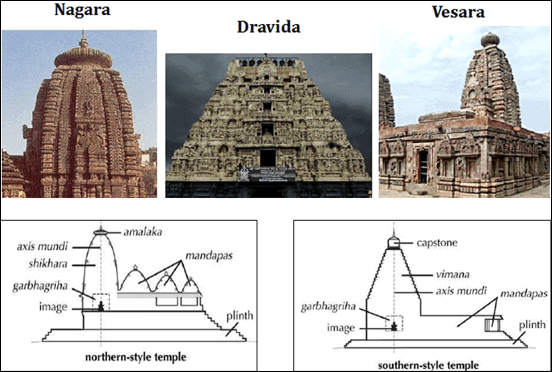Kerala SET Paper 2 Mock Test - 5 (History) - KTET MCQ
30 Questions MCQ Test Kerala SET Mock Test Series 2025 - Kerala SET Paper 2 Mock Test - 5 (History)
Consider the following statements regarding the Indian Factories Act,1891:
1. The age of children who can work in the factories is increased from 9 years to 16 years.
2. Reduced the working hour per day to 8 hours.
3. Maximum working hours for a day were 12 hours.
Which of the above statements is/are not correct?
With reference to the Dual Government, consider the following statements.
1) The Dual System of Government in Bengal was the brainchild of Lord Clive in 1765.
2) The Diwani was carried out by the company so Company was Diwan.
3) The Nizamat jurisdiction was carried out by these decrepit Indians so they were Nizam.
Choose the correct statements.
Which of the following is correct for Peshwas?
Which of the following were included in the battle of ten kings?
- Yadu
- Turvasha
- Puru
- Anu
Select the correct option from the codes given below:
Ashoka’s contemporary ruler, Turmaya, belonged to which of the following countries?
Consider the statements regarding to Dyarchy
1). In case of reserved subject Governor, though advised by ministers, could act in his own
2). Was abandoned all together in 1937
Which of the above statement(s) is/are correct?
With reference to Tipu Sultan, consider the following statements.
Choose the incorrect statement.
Gayatri mantra is found in which of the following?
Which of the following statements is incorrect regarding Alauddin Khalji’s administration?
Consider the following statements:
- A.O.Hume came to be known as the Founder Father of Congress.
- He was the one to suggest the name “Indian National Congress”.
- He was the author of “Old Man’s Dream”.
- The “Safety Value Theory” was the reason given by him in the formation of the “Indian National Congress”.
Choose the correct statements.
Prince of Wales came to India during the viceroy-ship of who of the following?
Consider the following statements.
1) Satyendranath Tagore became the first Indian ICS officer in 1868.
2) Lord William Bentick was the first to form local courts called Munsif Courts, presided over by the Indians.
3) T.B. Macaulay became the first Law Member.
4) Charles Wilkins was the first to translate Ramayan into English.
Choose the correct statements.
With reference to the Anglo-Maratha Wars, consider the following statements:
1. The main cause of the first Maratha war was the increased interference of the British in internal and external affairs.
2. The First Anglo-Maratha War was fought between the British East India Company and Maratha Empire, during 1775 - 1782.
3. After many battles both Marathas and Britishers signed the Treaty of Salbai to Conclude the first Anglo-Maratha War in 1782.
Which of the above statement is/are correct?
Which among the following was the primary cause of 1857 revolt?
Consider the following statements with respect to the Western Ganga dynasty :
1. They ruled in the northern part of Maharashtra and some parts of Madhya Pradesh.
2. The Gangas were contemporary to Kadambas.
3. Konganivarman was the first ruler of the Ganga dynasty.
Which of the statements given above are correct?
“Go Back to Vedas“. Who among the following gave this motto?
With reference to freedom struggle of India, consider the following statements of Swadeshi Movement:
1. In Rawalpindi (Punjab), the arsenal and railway workers went on strike led by Lala Lajpat Rai and Ajit Singh.
2. Subramania Siva and Chidambaram Pillai led strikes in Tuticorin and Tirunelveli in a foreign-owned cotton mill.
Which of the above statements is/are not correct?Consider the following statements regarding Humayun:
1. Shershah Suri defeated Humayun in the Battle of Bilgram
2. He defeated Afghans and set up the Mughal throne.
3. He was a highly learned person.
Which of the above statements is/are correct?Who of the following was/were economic critic/critics of colonialism in India?
1) Dadabhai Naoroji
2) G. Subramaniya Iyer
3) R.C. Dutt
Select the correct answer using the codes given below:
Which of the following pairs are correctly matched?
- Ghatika: Ancient centre of learning
- Devaram: Composed by Nayanars
- Nalayradivyaprabandam: Composed by Alwars
Select the correct answer from the codes given below:
Consider the following statements.
1. There are subdivisions of nagara temples depending on the shape of the shikhara.
2. Phamsana buildings tend to be broader and shorter than latina ones.
3. Valabhi type is a circular building with a roof that rises into a vaulted chamber.
Which among the above statements is/are correct?
Consider the following pairs:
1) Muzzafarpur Conspiracy Case:- Aurobindo Ghosh and Barinda Kumar Ghosh
2) Alipur Conspiracy Case:- Khudiram Bose and Prafulla Chaki
3) Kakori Conspiracy:- Ram Prasad Bismil, Ashfaqulla Khan
Choose the incorrect pair.
Which of the following statements is/are correct regarding Prarthana Samaj?
1. It didn't reject the Vedas and emphasized Bhakti towards God.
2. They were against the caste system and the practice of untouchability.
3. It opposed the idea of Widow remarriage but propagated Women's education.
At which of the following places the entry of women as Bhikshuni into the sangha was allowed by Buddha?
The sculpture of bronze idol of Natraja belonged to which kingdom?
On which among the following dates, execution of Bhagat Singh took place ?















